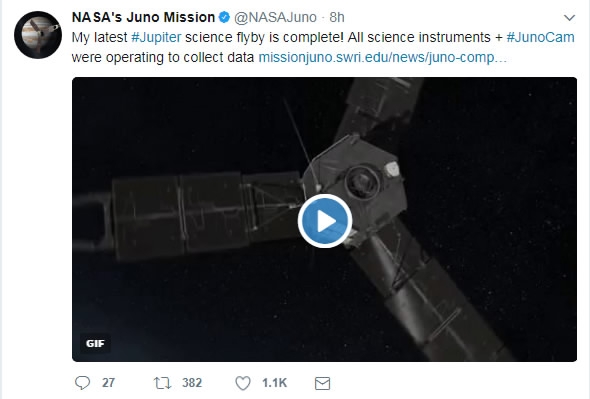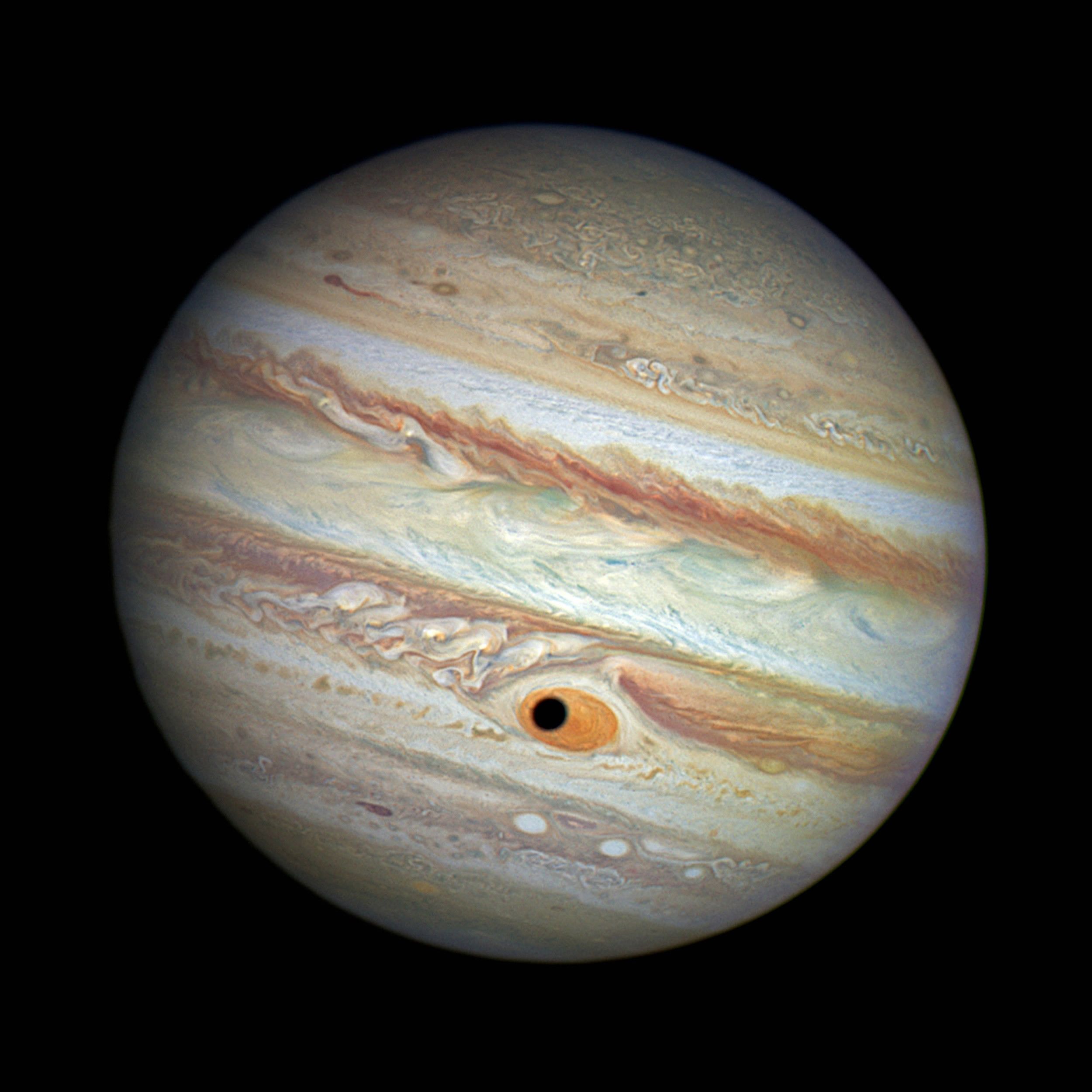A NASA spacecraft, Juno, has successfully peered into the giant storm raging on Jupiter, known as the Great Red Spot, and its first pictures should be out in days, the US space agency said Tuesday.
"My latest Jupiter flyby is complete!" said a post on the @NASAJuno Twitter account.
"All science instruments and JunoCam were operating to collect data."

NASA's Juno mission's Twitter post
The unmanned spacecraft came closer than any before it to the iconic feature on the solar system's largest planet, the gas giant Jupiter.
Experts say the Great Red Spot is a massive storm – some 16,000 kilometers wide – that has been churning for centuries, but little is known about the forces driving it.
It has been monitored since 1830 and has possibly existed for more than 350 years.
The storm is believed to have been shrinking in recent years.
"For generations, people from all over the world and all walks of life have marveled over the Great Red Spot," said Scott Bolton, principal investigator on the Juno project.
"Now we are finally going to see what this storm looks like up close and personal."

A photo captured by the Hubble Space Telescope in 2014 shows the shadow of the Jovian moon Ganymede in the center of the Great Red Spot. /VCG Photo
The flyover took place on July 10 at 9:55 pm (July 11 at 0155 GMT), as the spacecraft passed about 9,000 kilometers above the spot's coiling crimson clouds.
"Raw images will be posted in (the) coming days," the space agency said.
Juno launched on August 5, 2011, from Cape Canaveral, Florida, and has been orbiting Jupiter for just over one year.
(Source: AFP)
Related Story:
Juno spacecraft to fly directly over Jupiter's Great Red Spot next week









